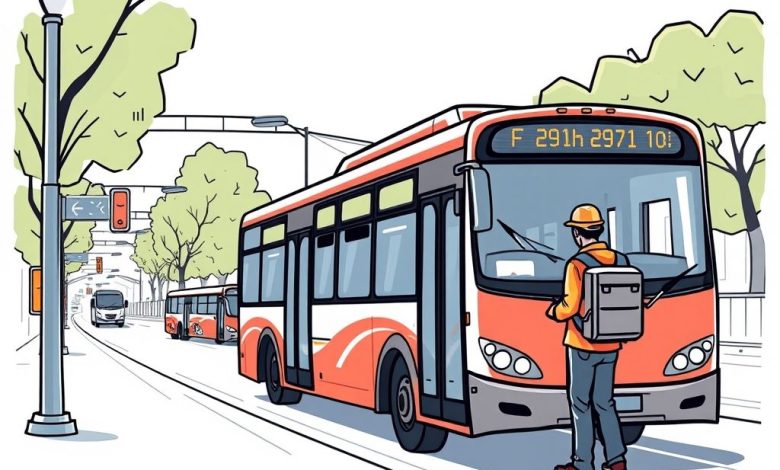Field Service Management for Public Transportation Systems

Introduction
Field Service Management (FSM) is a critical component of modern public transportation systems. It encompasses the processes and technologies used to manage and coordinate maintenance, repairs, and other services performed outside of a fixed location. In the context of public transportation, FSM plays a vital role in ensuring the reliability, efficiency, and safety of services.
- The Importance of Field Service Management in Public Transportation
- Technologies Used in Field Service Management for Public Transportation
- Mobile Workforce Management
- Predictive Maintenance
- Augmented Reality (AR) for Troubleshooting
- Internet of Things (IoT) Sensors
- Best Practices for Implementing Field Service Management in Public Transportation
- Case Study: London Underground’s FSM Implementation
- Conclusion
The Importance of Field Service Management in Public Transportation
Public transportation systems rely heavily on a fleet of vehicles and infrastructure that require regular maintenance and upkeep. Without effective FSM, buses, trains, and other vehicles may experience breakdowns, leading to service disruptions and decreased passenger satisfaction. Additionally, FSM helps optimize resource allocation, reduce costs, and improve overall system performance.
Key Challenges in Public Transportation FSM
- Large-scale operations: Public transportation systems often cover extensive areas and involve numerous vehicles, making it challenging to manage resources effectively.
- Time-sensitive nature: Delays in service can have significant impacts on commuters and the entire transportation network.
- Regulatory compliance: Public transportation must adhere to strict safety and regulatory standards, which adds complexity to FSM processes.
- Technological integration: Incorporating advanced technologies like IoT sensors and AI-powered diagnostic tools requires careful planning and implementation.
Technologies Used in Field Service Management for Public Transportation
Modern FSM solutions leverage various technologies to streamline operations and enhance efficiency:
Mobile Workforce Management
Mobile applications allow technicians to receive assignments, update job statuses, and access necessary information while in the field. These apps typically include features such as:
- GPS tracking for real-time location monitoring
- Job scheduling and optimization
- Inventory management
- Electronic signature capture
Predictive Maintenance
Advanced analytics and machine learning algorithms analyze data from various sources to predict potential equipment failures before they occur. This proactive approach reduces downtime and extends the lifespan of assets.
Augmented Reality (AR) for Troubleshooting
AR technology overlays digital information onto the physical environment, providing technicians with step-by-step instructions and visual guides for complex repairs.
Internet of Things (IoT) Sensors
Embedded sensors in vehicles and infrastructure collect data on performance metrics, environmental conditions, and usage patterns. This data feeds into predictive models and helps identify areas for improvement.
Best Practices for Implementing Field Service Management in Public Transportation
To ensure successful implementation of FSM in public transportation systems, consider the following best practices:
- Standardize processes: Develop clear, consistent procedures for all types of service requests and maintenance tasks.
- Invest in training: Provide ongoing training for technicians to keep them updated on new technologies and best practices.
- Integrate with existing systems: Ensure seamless connectivity between FSM software and other transportation management systems.
- Regularly review and refine: Continuously assess the effectiveness of FSM strategies and make adjustments as needed.
- Prioritize customer feedback: Encourage passengers to provide input on service quality, which can help identify areas for improvement.
Case Study: London Underground’s FSM Implementation
The London Underground, one of the busiest metro systems in the world, implemented a comprehensive FSM solution to improve its maintenance operations. The system includes:
- A mobile app for technicians to access work orders and track progress
- Real-time monitoring of train movements and station conditions
- Automated scheduling based on priority and technician availability
- Integration with the existing computerized maintenance management system (CMMS)
This implementation resulted in a 20% reduction in maintenance time and improved first-time fix rates by 15%.
Conclusion
Field Service Management is crucial for maintaining the reliability and efficiency of public transportation systems. By leveraging advanced technologies and implementing best practices, transportation authorities can significantly improve service quality, reduce costs, and enhance passenger satisfaction. As the transportation landscape continues to evolve, the importance of robust FSM will only grow, driving innovation in this critical area of public transportation management.




